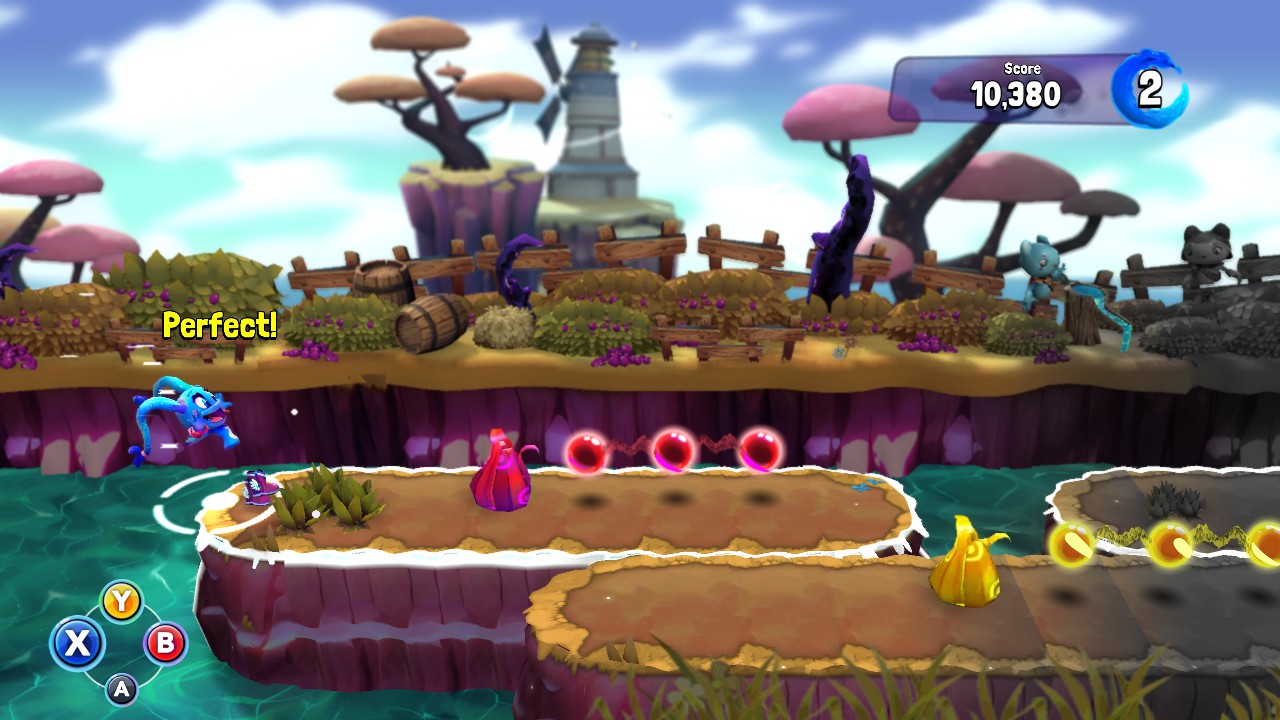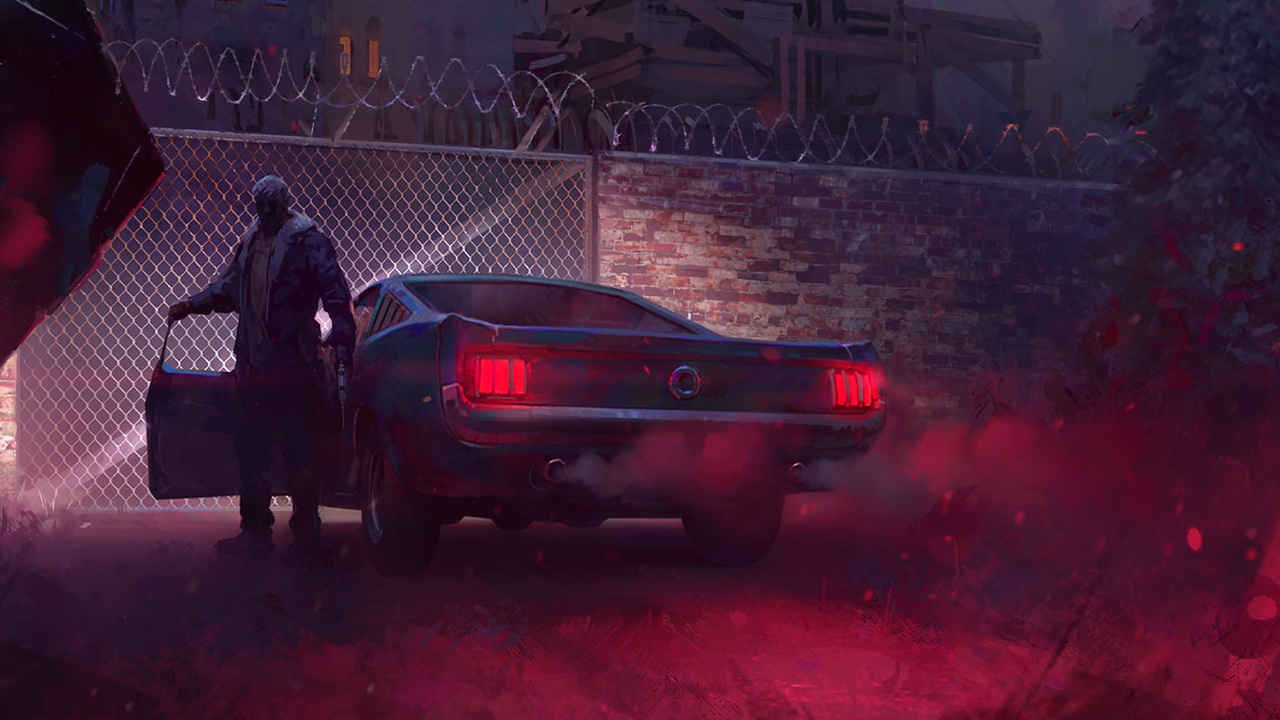Our Verdict
A decent distraction, but Color Guardians is too repetitive and drab to warrant close attention.
PC Gamer's got your back
What is it? A fast-paced side-scrolling action game
Reviewed on: Windows 8.1 (64-bit), Intel Core i7-4720HQ, 16GB RAM, Nvidia GeForce GTX 980M / 3GB GDDR
Play it on: Intel Core Duo 2Ghz / Nvidia 8800 GT, ATI Radeon HD 4850, 4GB RAM
Copy protection: Steam
Price: $15 / £11
Release date: Out now
Publisher: Niffler, Ltd.
Developer: Fiar Play Labs
Multiplayer: None
Link: Official Site
In the ‘90s I played dozens of shareware games on my state of the art 486 PC. It was a golden era for free DOS games, but for every classic Duke Nukem, Doom or Jazz Jackrabbit there were the games I’d play just because they existed. No point questioning whether they were fun: the games existed on a disc, there was nothing else to do, and so they needed to be played.
Color Guardians reminds me of the countless hours I spent playing forgettable shareware games. It’s not terrible by any measure, it’s just kinda average in every conceivable way. An on-rails platformer with rhythm game elements, you play as a series of curiously dead-eyed pixie creatures known as Guardians, tasked with running color-coded gauntlets in cloyingly whimsical settings in order to bring color back into the world.
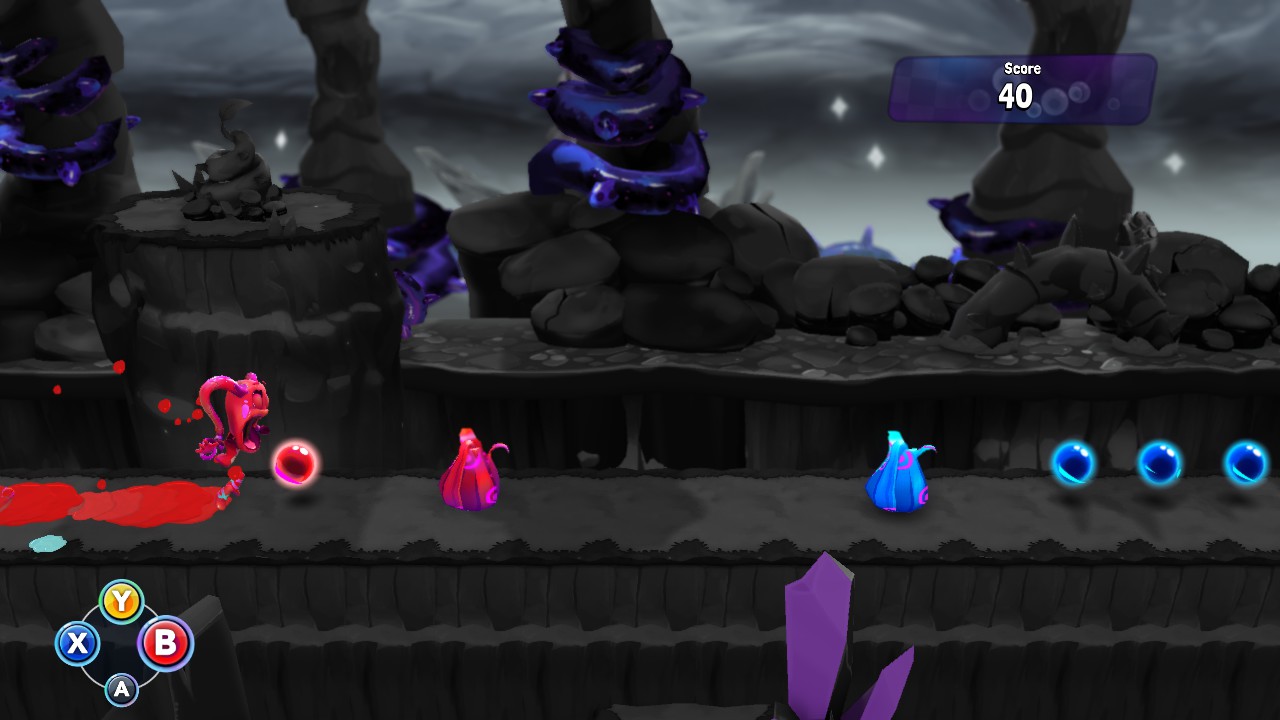
To elaborate: your dead-eyed pixie is capable of morphing into blue, red or yellow pixies. Morphing between colors is as simple as pressing the corresponding color on an Xbox 360 controller, which the game was clearly designed for, or struggling with the keyboard equivalent, which maps red to S, yellow to A, and blue to D by default. You’ll need to switch between colors in order to clear obstacles of the same hue, while tapping the correct button before picking up a collectible will net you more points.
Set across three lanes, the levels require rapid switching between each as you match your pixie’s color with oncoming obstacles. It’s not always obstacles you’ll need to pass, though: trampolines, launch pads and even Donkey Kong-esque cart tracks are color sensitive. Oh, and Color Guardians is tough. Managing your color, the right lane to be in, and managing oncoming death traps requires a lot of mental bandwidth, and while the challenge is appealing at first, there are some critical problems.
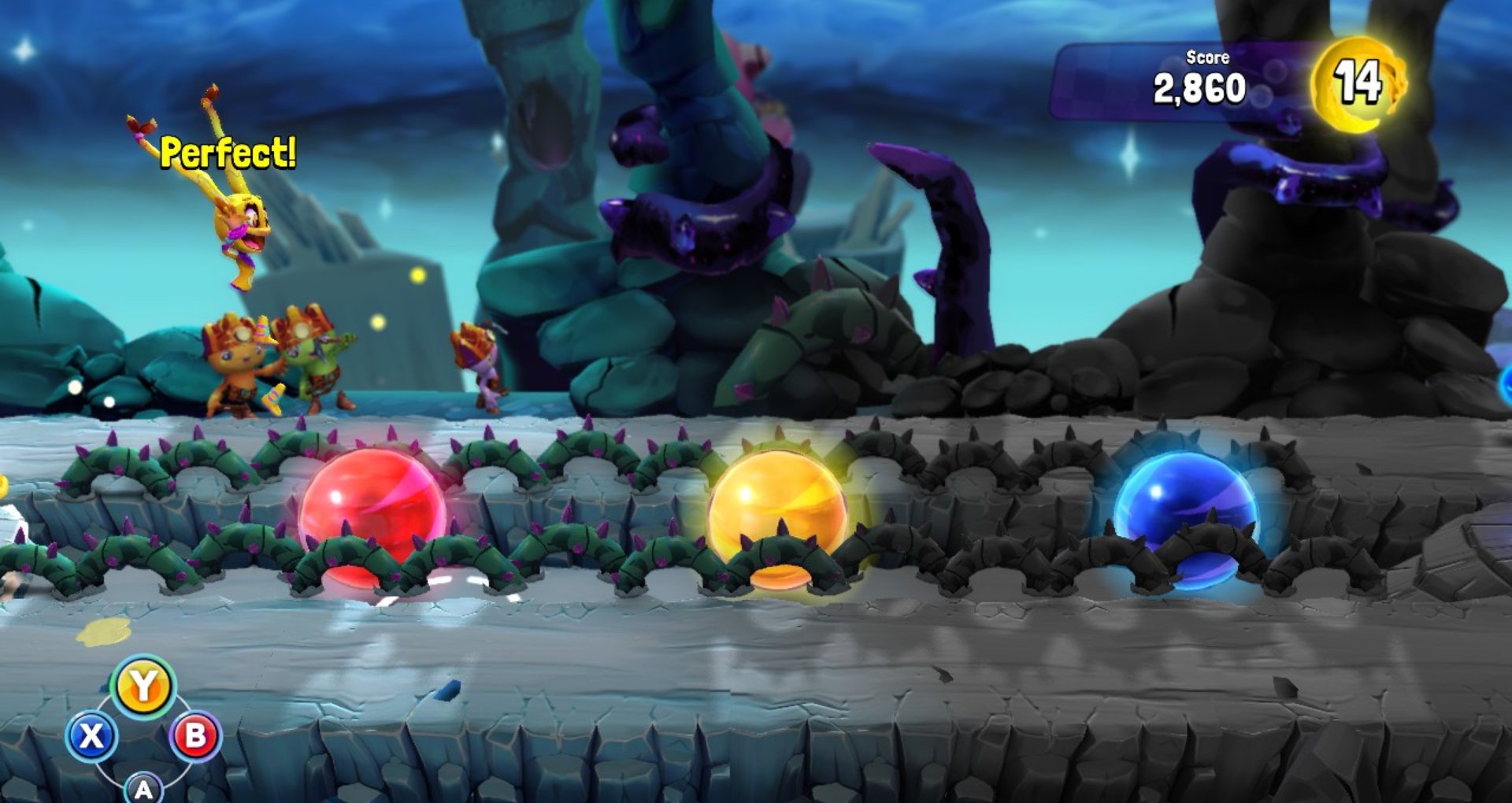
Chief among these is that Color Guardians is ugly. The art style is passable if bland, but the game’s way of incentivising perfection basically undermines any joy you’ll find in getting good. See, if you don’t consistently collect the colored orbs as the appropriately colored pixie, the levels are dabbed in an oppressively dull black, blue and grey color scheme. It’s easy enough to lift this patina in earlier levels, but when things get hairy you’d better get used to looking at those three colors for a very long time. After a while you want to give up and go play something more colorful, like Fallout 3.
It’s a really weird decision in a game so hellbent on being cheerful. When you’re good enough to see colors they’re vibrant and inviting, but the environments are a bit cluttered for a game demanding this much precision, especially in busy levels. I often mistook obstacles for decorative elements, or else misjudged a landing because I was looking at the wrong lane (there’s a floating reticule to help with this, but it’s difficult to follow in the heat of the moment). To make matter worse, when you’re doing terribly and the world is bereft of color, some obstacles, like lane-separating fences, are difficult to detect at speed. Bottom line is: not having color in a colorful action game is not fun.
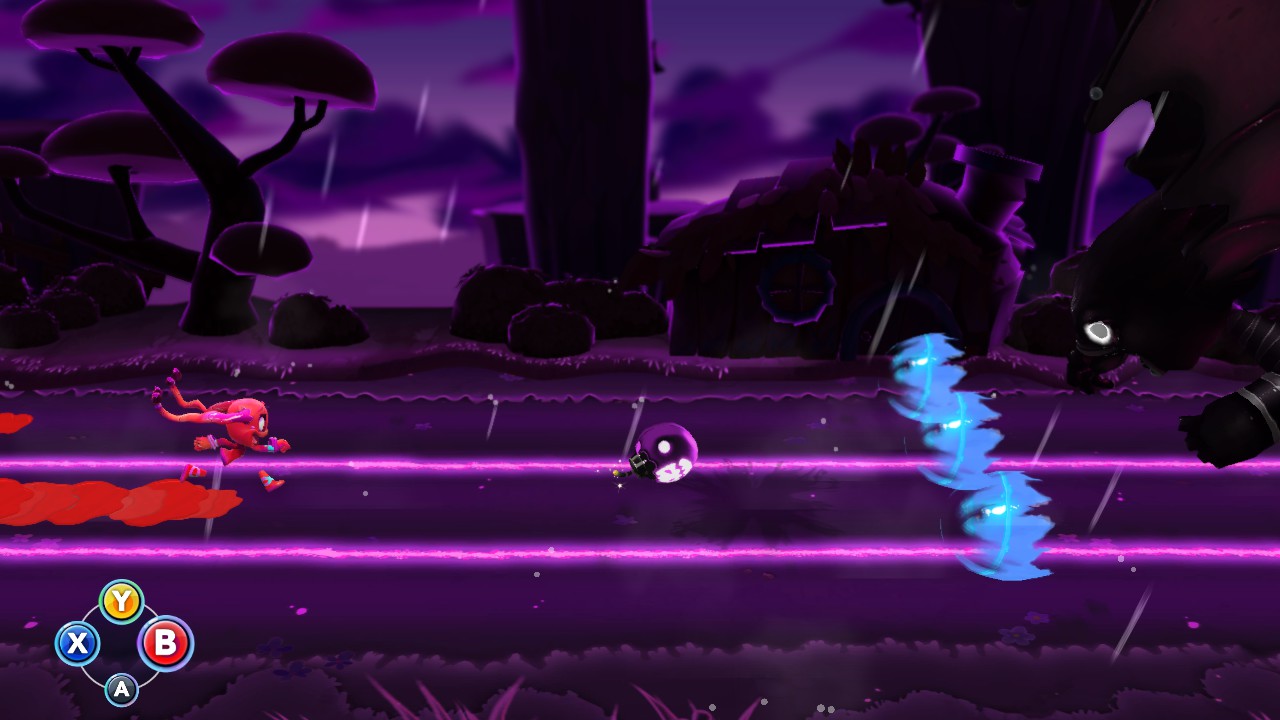
Despite the drab presentation and Whimsical Platformer 101 graphical aesthetic, the sound effects and music nail the snappy feedback required in a precision platformer. Changing colors is quick and responsive, to the extent that the game rewards a split second leeway when transforming mid-obstacle or launchpad. As a palette cleanser played between other games—ideally for less than an hour—Color Guardians works well, but spend any longer with it and anxiety, depression—even a worrying desire to smite mankind—may overwhelm. And that’s no fun at all.
Keep up to date with the most important stories and the best deals, as picked by the PC Gamer team.
The biggest problem with Color Guardians is that, despite varied environments and a steady culmination of new obstacles and tricks, it lacks a sense of momentum. Set across five worlds, each with ten levels, a boss and secrets, I found the game far too repetitive to feel any sense of gratification at having completed the levels, nor did I feel compelled to perfect them in order to unlock more. When I completed a gruelling section I didn’t feel overjoyed, but relieved that I’d never have to do it again. For a game so excruciatingly difficult at times, incentive to win isn’t enough: I want to enjoy my time in the gameworld. It needs to fascinate. Color Guardians fails on both these counts.
A decent distraction, but Color Guardians is too repetitive and drab to warrant close attention.

Shaun Prescott is the Australian editor of PC Gamer. With over ten years experience covering the games industry, his work has appeared on GamesRadar+, TechRadar, The Guardian, PLAY Magazine, the Sydney Morning Herald, and more. Specific interests include indie games, obscure Metroidvanias, speedrunning, experimental games and FPSs. He thinks Lulu by Metallica and Lou Reed is an all-time classic that will receive its due critical reappraisal one day.
